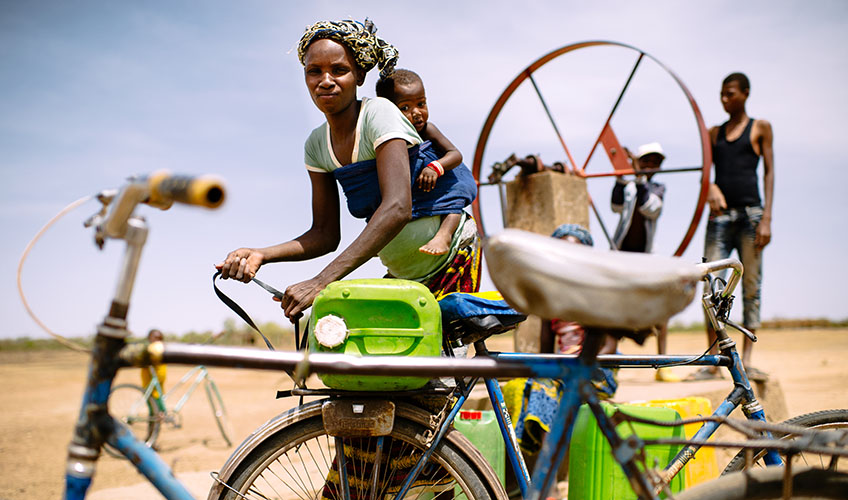The Sustainable Development Goals look shaky – but here are five ways to deliver
Unless the global community puts SDG16 – on peace, justice and strong institutions – at the heart of all its efforts, the Global Goals will fail the majority of the world’s extremely poor.

The Paris Peace Forum was born of French President Emmanuel Macron’s clear-eyed realism about the global challenges we face. Launching the forum last year, he characterised it as a space where “everyone who makes up the world today … and can change it” could gather to share problems and solutions.
In that spirit, here’s a global problem: the Sustainable Development Goals (SDGs) are going to fail the vast majority of the world’s extremely poor unless we change how they are being implemented.
Let’s define that problem: by 2030, 80% of the world’s extremely poor (that’s 620 million people) will live in fragile, chronically violent places. Those countries and regions where very poor people live are at risk of being trapped by cycles of conflict and disaster, compounded by climate change, resource scarcity, demographic surges, migration, displacement, transnational extremism and poor governance.
Put simply: this is where the SDGs will succeed or fail. We know this because those countries who failed to fulfil some, or all, of the Millennium Development Goals were all fragile and conflict affected. Tracking progress toward SDGs shows that 74% of countries that are severely off-track are fragile and roiled by violent conflict. For our Global Goals, sadly it’s déjà vu all over again.
It’s clear that business as usual will not deliver. Yet there are solutions to hand.
First, let’s place SDG16 – peaceful, just and inclusive societies – at the heart of all action toward the Global Goals. Each goal isn’t an island – they are all co-dependent, and SDG16 is the key that will unlock real progress toward every goal for the world’s extremely poor. Peacebuilding really is the magic ingredient here.
Second, let’s recognise that fragile and violent contexts demand different ways of working. All interventions – be it health provision, access to water, agriculture or poverty reduction – must be conflict sensitive, thus contributing to greater stability and resilience even within fluid, fast-moving environments. Comprehensive strategies like the World Bank’s forthcoming doctrine on ‘Fragility, Conflict and Violence’ help illuminate how this can work.
Third, let’s move beyond a ‘hard security’ focus on militarised solutions to violent extremism. Public safety is vital, but all the evidence shows this approach will exacerbate the very root causes that nurture violent extremist groups: not just poverty or lack of jobs, but lack of a voice, social exclusion, inequity and poor governance.
Fourth, we must not only emphasise the importance of gender – with its imperative focus on women and girls as agents of change – but gender relations. Our gender and sexual identities are complex, as is how they relate to our ethnicity, tribe, class, status and cultures. Unpacking how men’s and boys’ understanding of their masculinity impacts gender and sexual violence is as key to building peace and greater stability as is the empowerment of women and girls.
Finally, we need an SDG acceleration plan for fragile and conflict-affected states. Unless the world community dedicated to achieving the Global Goals comes together in a coordinated, coherent fashion and offers all its support through a comprehensive, intensive, multi-donor, adaptive and conflict-sensitive plan for each country, then not only will 620 million people continue to suffer from poverty, violence and poor governance, but even progress made in the MDGs will be eroded.
President Macron has had the vision necessary to bring all the change-makers together in Paris. Let’s take advantage of that and commit to a concerted effort to realize SDG16 as the gateway to all our shared Global Goals.






